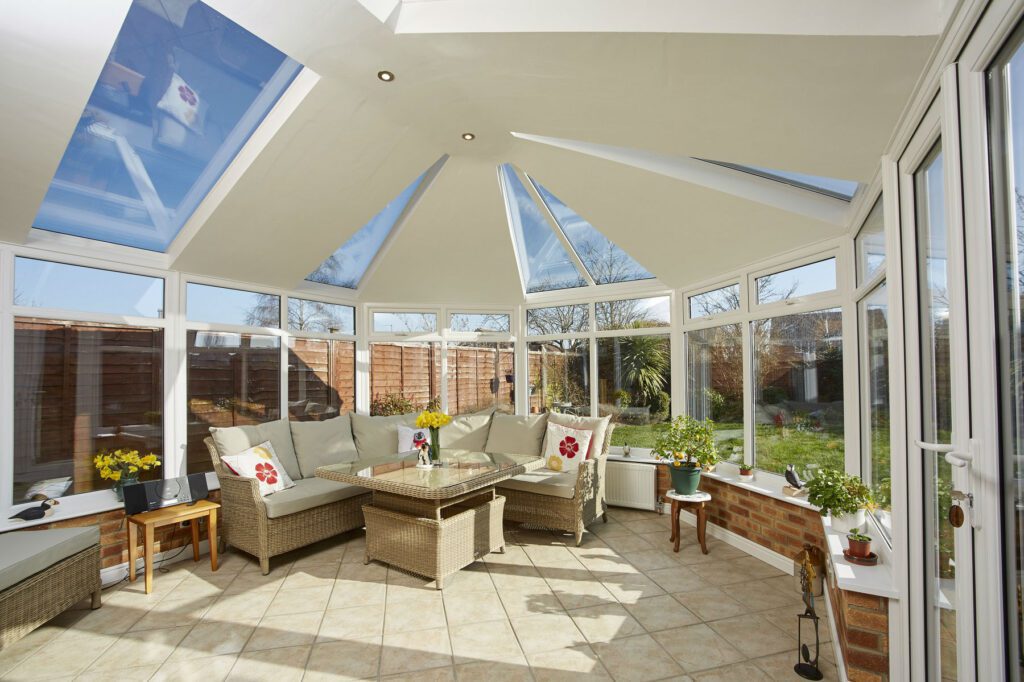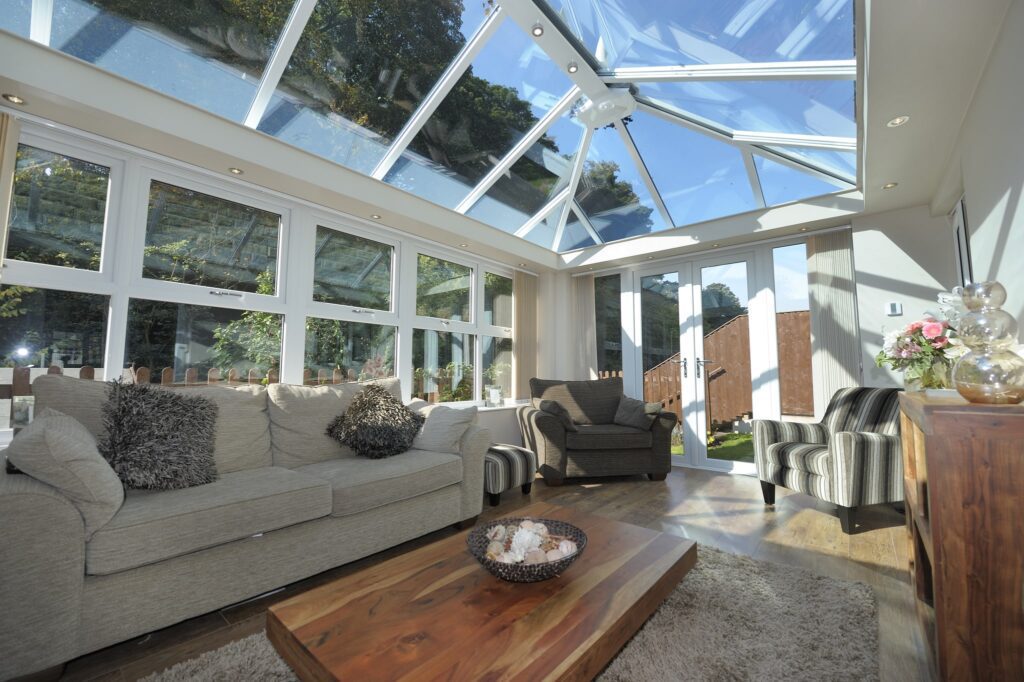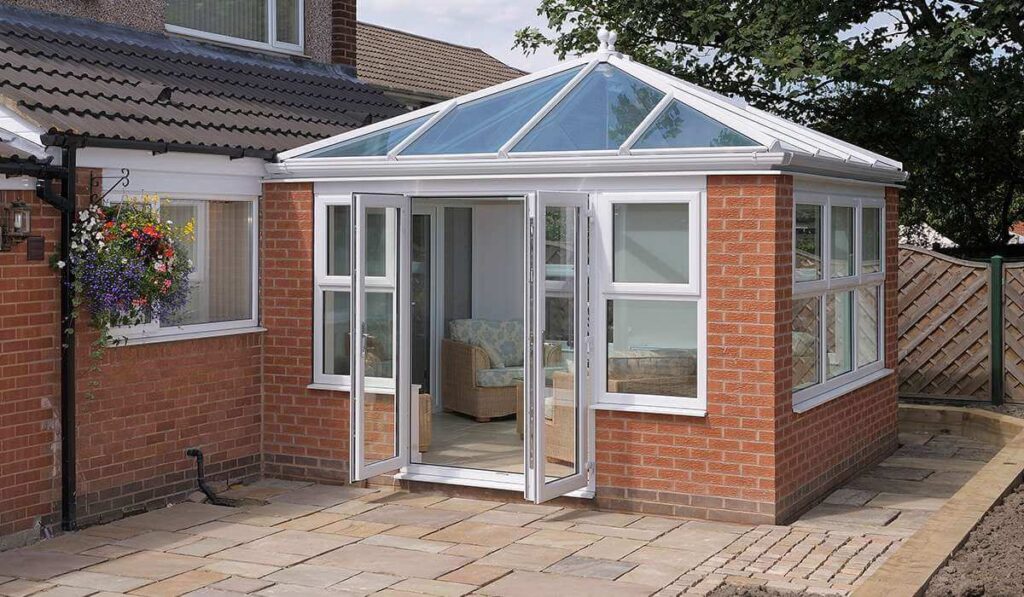A conservatory can be a fantastic addition to your home. Providing a year-round living space for significantly less than most extensions and potentially adding value to your property, a conservatory is an excellent choice for UK homeowners looking to maximise space.
However, some conservatories require planning permission, and failing to go through the proper channels could cost you more.
So, how do you know if your conservatory requires planning permission? And how do you apply?
Don’t worry, in this blog, we’ll explain when and why you may need planning permission to build your new conservatory and outline the application process.

When is Planning Permission Not Required?
The good news is that most conservatories do not require planning permission. As a single-storey extension, the average UK conservatory will be covered by permitted development rights. However, there are some exceptions.
For example, if your conservatory is at the front or side of your property, you will likely need planning permission.
Always remember that permitted development rights are different to building regulations, and your conservatory will need to comply with both.
Understanding Permitted Development Rights
Permitted development rights enable UK homeowners to carry out building projects on their property without the need for planning permission.
The permitted development rights allow you to build a conservatory if:
- It is a single-storey extension with a maximum height of 3m (if within a 2m boundary) and 4m otherwise
- It does not cover more than 50% of the garden
- The roof ridge or top point is not higher than the original roof of the house
- It does not extend beyond the sidewall of the house
- It is no more than half the width of your home
- It does not face onto a road
- It does not include raised platforms, balconies or verandas
- It is less than 50% in size of the total area around the original property
A detached property can now extend 8 metres, while a semi-detached or terrace house can extend a maximum of 6 metres.

Conditions That Require Planning Permission
If your conservatory plans fall outside the permitted development rights explained above, you may require planning permission.
Other reasons you may need to seek planning permission include:
- You wish to use different materials than those used on the exterior of your existing property
- You live in a conservation area or other designated area
- You live in a listed building – listed buildings have specific consent requirements

Types of Planning Permission
There are three types of planning permission – Outline planning permission, Full Planning Permission, and Householder Planning Permission.
Outline Planning Permission
Here, a ‘permission in principle’ is offered, stating that the proposed project is viable. However, this does not allow you to begin work. You will then need to apply ‘reserved matters’ detailing the design, materials to be used etc.
Full Planning Permission
Obtaining full planning permission means the local authority has granted consent for a detailed design. You must meet stipulated planning conditions and acquire a letter from the local authority to this effect before the project can get underway.
Householder Planning Permission
This grants homeowners permission to extend or otherwise alter a house within the boundary of the property.
Steps to Apply for Planning Permission
The process for most homeowners has been streamlined considerably. If you are planning a conservatory, you can now alert your local authority, who will consult with your neighbours and decide if any objections are valid. If the local authority feels your plans are likely harmful to your neighbours or the area, they can reject them or ask for modifications.
If you require planning permission, there is both a cost and waiting time, so always factor both in when planning any significant home improvements.
The Planning Application Process:
Planning permission applications are granted following a combination of local authority planning policies and national guidance from the National Planning Policy Framework.
To gain planning permission, you must submit accurate survey drawings and technical information provided by experts.
All local planning authorities use the same form, the 1APP, which you can download and submit your application online via the Planning Portal.
It can be a lengthy process, even online, requiring the following:
- Five copies of application forms
- Signed ownership certificate
- Location plan, block plan, and elevations of both the existing and proposed sites
- Design and Access Statement
- Drainage information
- The complete payment
Other documents you may need to supply include:
- An ecological survey
- Tree survey showing root protection zone
If you choose to go ahead without obtaining planning permission or checking if it is required, the local authority has the right to demolish or alter the project. You will also have to make a retrospective planning application at your own expense and can incur higher costs if you lose your appeal.
While altering most properties without planning permission isn’t illegal, doing so to a listed building is a criminal offence. If found guilty, you can be fined an unlimited amount and, in extreme cases, even face imprisonment.
The Cost of Planning Permission
The average cost of planning permission for a conservatory is around £200- £400 for a householder application, depending on the scope and complexity of the job and your location.
If you are granted outline planning permission, all materials and details must be approved, costing £100+ for each application, potentially taking the cost into the thousands. One application can include multiple details and materials.
Will My Application Be Successful?
MyJobQuote has reported that, in England, around 86% of applications are granted, with approximately 40% of those rejected granted planning permission at appeal.
If planning permission is not granted, try to alter your plan so it addresses the concerns laid out in the refusal statement. For example, it could be the materials you plan to use that do not match the area – rethink your design to be more in tune with the local architecture. You can consult a local architect or planning consultant to help you.
You get a free resubmission if your initial application is refused, and it does not affect your credit or standing as a homeowner.
Common Pitfalls and How to Avoid Them
A new conservatory is a significant undertaking, and there are a few common issues that crop up when you don’t have adequate planning.
1. Not complying with permitted development rights – always check the latest guidelines before embarking on a major building project.
2. Not meeting building regulations – likewise, you need to ensure any building work adheres to the latest guidelines while still in the planning stage.
3. Mis-match with your house – be sure to factor in the architecture and decor of your property to ensure the conservatory blends in.
4. Too small – Trying to stay within budget and comply with guidelines could lead to you building your conservatory too small. This is a false economy, if it is too small for comfort, you are not going to get much use out of it.
5. Roof leaks – Poorly installed conservatories, broken seals or faulty vents can create leaks in the roof so opt for professional installation and do regular spot-check maintenance to keep your conservatory in tip-top condition.
6. Too cold (or hot) – You need to balance insulation with ventilation to get the perfect temperature all year round – look for energy-efficient glass that offers both.
7. Faulty doors – Last but not least, make sure your connecting doors are properly installed and clean them regularly for optimal functionality.
Conclusion:
To recap, most conservatories can be installed without planning permission, but you should always check with the local authority and your neighbours before any work begins.
We hope this guide has helped you better understand the ins and outs of planning permission for a conservatory.
At Manchester Window Factory, we offer several different types of conservatories, including tiled roof designs and integrated solar panels.
If you would like to know more, please don’t hesitate to get in touch.
FAQs
If you are planning a significant building development project, such as a conservatory, you should first think about planning permission.
Buying a conservatory is not cheap, so you need to make sure you are within your rights to erect a new structure or build on your existing property.
In most cases, conservatories, like extensions, fall under permitted development rights, however, there are exceptions.
It is not advised. Building a conservatory in a conservation area without planning permission can have serious consequences. Conservation areas are protected, with local authorities deciding whether a new structure makes a positive or negative contribution to the area.
Materials, positioning, size, height, shape and overall design must be carefully chosen so it is likely you will need planning permission to agree to your proposal.
As of 2019, the guidelines now allow you to build a conservatory double the previous maximum size. Terraced or semi-detached homeowners homeowners can build a conservatory extending up to 6 metres – about the same as a limousine.
Those with a detached house can build out to a huge 8 metres – approximately the size of a double-decker bus.
Yes, the following permitted development rights relate to conservatory height restrictions:
- It must be single-storey and no taller than 3m (if within a 2m boundary) or 4m high
- The roof ridge or top point must not be higher than the original roof of the house
Your conservatory can be as close to the property boundary as you like, but the proximity will affect the height. If your conservatory is within two metres of the boundary, it must be less than 3 metres in height.
Your conservatory will typically not require building regulations approval. However, as with permitted development rights, it must meet certain conditions, including:
- It is built at ground level
- The floor area is no more than 30 square metres
- A minimum of 75% of the roof and 50% of the new wall is glass or translucent
- The house is separated from the conservatory by external walls or windows
- The heating system is independent of the main property and has separate on/off controls
- The glazing and fixed electrics comply with the corresponding building regulations.
In May 2019, the UK Government relaxed the permitted development rights regarding conservatories, making it easier for homeowners to extend their properties with a conservatory.
Until then, non-detached properties were only eligible for a 3m single-storey extension, while detached properties could add a single-storey extension, a maximum of 4m. The change was to enable families to grow without having to move.
Instead, they decreed that the conservatory must have no negative impact on your neighbour’s property.
Neighbours can object to extensions, including conservatories, under the ‘Neighbour Consultation Scheme’.
So, while you may not need planning permission for your conservatory, you should always consult your neighbours before undertaking any work, as it will affect them too.
Your local authority will consult your neighbours when you inform them of your intention to build, but it is best if it comes from you.
Even if the conservatory won’t negatively affect your neighbours, the building work may disrupt their lives, so you should try to work with them to find a convenient time for the installation.
Lastly, any new build or add-on must adhere to Building Regulations.
The average time for a planning permission application to be approved or rejected is around eight weeks. However, this can increase to around 13 weeks for large or complicated designs.
You will be notified at the time how long your planning permission is valid. It is usually around three years from the date permission is granted. If you need longer, you can reapply. Remember that legislation may change, so you are not guaranteed to be approved the second time.
Some people think having a radiator in their proposed conservatory design could affect planning permission, but that is not the case.
There are reasons for and against having a wall-mounted or freestanding radiator in your conservatory, but it is certainly not illegal and will not affect planning permission.
How to Get in Touch
If you want to find out more about creating customised windows, doors, and conservatories, please don’t hesitate to get in touch. You can call us on 0161 976 4739, use our contact form or chat with us via the chat button at the bottom right of this website. If you live locally, you can also visit our Altrincham showroom, and check our contacts page for up-to-date opening hours.
We look forward to hearing from you!




